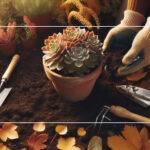Introduction to Sedum Seeds
Welcoming a verdant array of sedum into your garden starts with a tiny encapsulation of potential: the seed. This humble beginning is the genesis of a succulent tapestry that can thrive in a wide range of climates and conditions—yes, you can grow sedum from seed, and the journey is as rewarding as it is easy!
Picture this: sedum species, known for their drought tolerance and resilient nature, sprouting from grains sown into well-draining soil. Each variety brings its own palette and personality to your garden. From the frosted blues of ‘Blue Spruce’ to the fiery hues of ‘Dragon’s Blood’, there is a sedum to match every gardener’s dream.
The truth is, while many gardeners opt for propagation through cuttings, growing sedum from seed opens up a world of diversity. Real-life examples abound where gardeners experiment with seed mixtures to cultivate a custom sedum spread that is as unique as their gardening style. A sprinkle of seeds today can lead to a flourishing ground cover tomorrow—or an eye-catching vertical display!
For anyone new to the sedum game, or for those looking to expand their succulent savviness, we’ve got an array of care tips to ensure your stonecrop success. Join us as we delve into the fascinating world of sedums, exploring how these wieldy wonders can enhance any nook or cranny of your garden space.
Choosing the Right Sedum Seeds
Ready to dive into the world of sedum? You’re in the right place! Selecting the appropriate seeds can make a huge difference in your garden’s success. Now, let’s not kid ourselves, embarking on this seed-sprouting journey requires a pinch of know-how, but nothing too daunting—we’ve got you covered with these juicy tips!
First things first, healthy seeds are the bedrock of any thriving sedum garden. Imagine picking a pebble off the street and expecting a lush green plant to pop out—no chance, right? Healthy sedum seeds should be uniform in color and size, robust and free from any signs of damage or discoloration. It’s like picking a winning team; you want all players to be in tip-top shape. Have a peek at some 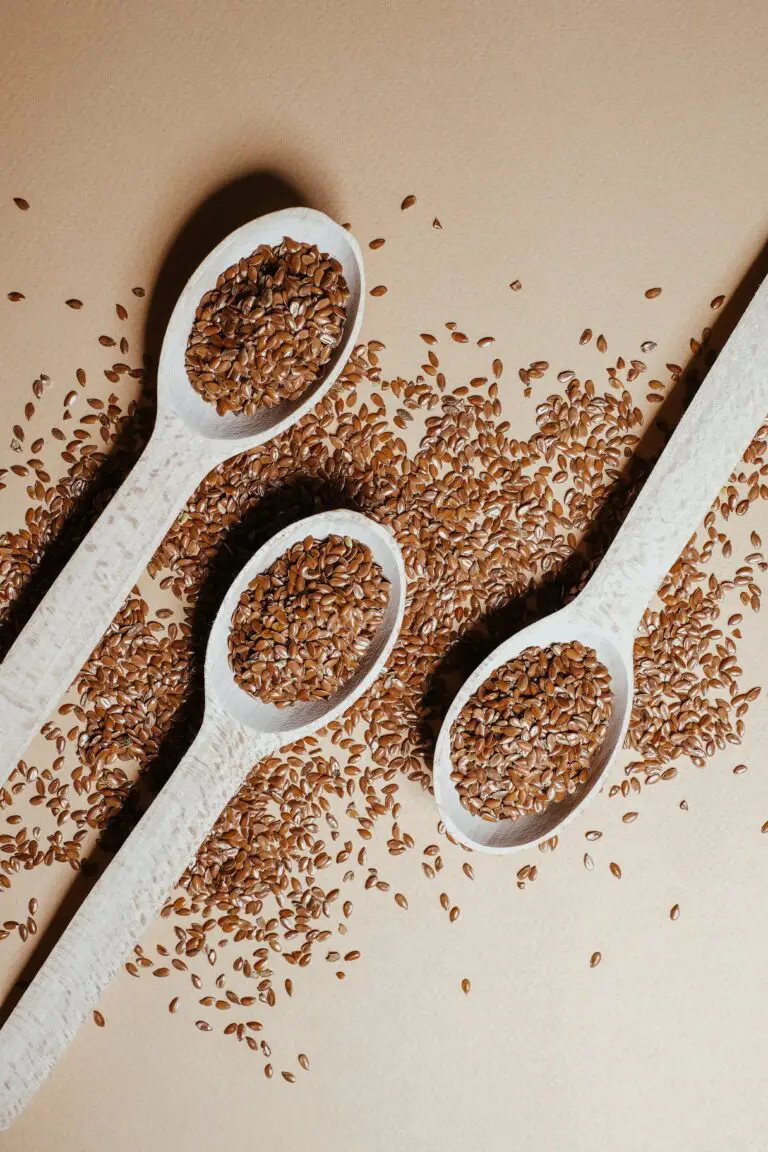 for a clearer picture of what you should look for.
for a clearer picture of what you should look for.
Now, who doesn’t love a bit of variety in their lives? Sedum, also fondly known as stonecrop, offers an exciting palette to paint your garden with. You could go for ‘Autumn Joy’ with its fabulous fall colors or ‘Cape Blanco’ with its silvery leaves that shimmer in the sun. Remember that fellow gardener who had a sea of ‘Dragon’s Blood’ sedum sweeping through their yard? Yeah, that could be you! Each species has its unique charm and will flourish under different weather capes. I’m talking sun-loving, drought-tolerant, and even frost-resilient types—you’ve got a smorgasbord of choices!
Speaking of weather, let’s matchmake your seeds with your local climate. Sedum is incredibly versatile and can adapt to a range of conditions, but choosing a species that’s well-suited to your area’s temperature and humidity will give your green babes the best start in life. Exploring the resilient beauty of these plants in different climates will guide you to the perfect sedum match. Plus, wouldn’t you want to pick a type that boasts a prime performance rather than one that shivers at the first hint of frost?
There’s nothing quite like getting your hands in the dirt and planting seeds that transform into vibrant, living sculptures in your garden. With the appropriate sedum variety, your yard could be on its way to becoming the talk of the town—or at least your own personal Eden. So, are you ready to get those hands dirty? Because your sedum sanctuary awaits!
If you found these insights as delightful as finding an unexpected blossom on your windowsill, you might want to take a gander at more tips for selecting the right seeds for your garden. Go on then, grow your knowledge as you plan to grow your sedum!
Optimal Conditions for Sedum Seed Germination
Embarking on the journey of growing sedum from seed is an exciting venture, filled with the anticipation of those little green shoots breaking through the soil. But what does it take to coax those seeds into sprouting? Let’s chat about the nitty-gritty of creating the perfect germination haven for your sedum seeds.
First things first, soil type matters. Sedum seeds thrive in a well-draining medium – think something akin to the natural rocky crevices they might find in the wild. So, skip the heavy, clay-laden mix and opt for a lightweight, gritty compost that keeps those tiny seeds snug but not soggy. Imagine tucking them into a bed that’s just right – not too hard, not too soft, but a perfect spot for roots to take hold.
Temperature plays a big role too. These seeds are like Goldilocks, seeking that ‘just right’ balance. Not too hot, not too cold – a stable temperature range between 65°F to 70°F (18°C to 21°C) provides the cozy warmth sedum seeds crave for germination. It’s like setting up a little seedling spa where they can relax and start to grow.

Now, let’s not forget about sunlight exposure. Sedum seeds don’t require a beach holiday’s worth of sun to germinate, but they do need a gentle nudge from light to wake up from their slumber. A bright but not blazing spot by a south-facing window or under some grow lights will do the trick. Imagine them stretching out like sleepy cats in just enough warm sunbeams.
Remember, patience is key – sedum seeds won’t sprout overnight. You’re the director of this growth symphony, orchestrating conditions to hit just the right notes. And while you’re nurturing these future succulents, why not take a moment to learn more about the diverse varieties of sedum that could be the next stars in your garden ensemble? With these tips up your sleeve, those sedum seeds will be well on their way to flourishing.
Sowing Sedum Seeds: A Step-by-Step Guide
Are you dreaming of creating a sedum spectacle in your garden or on your balcony? Good news! Growing sedum from seed isn’t just doable; it’s downright enjoyable. Let’s embark on a seed-to-succulent journey and transform your green thumbs into sedum masters.
Soil Preparation: The Perfect Bed for Tiny Seeds
First things first, soil preparation is key! Sedum isn’t fussy, but it does love a cozy bed of well-draining soil. A mixture of potting soil, coarse sand, and perlite creates the perfect environment for your seeds. The goal here is to mimic the rocky, well-aerated native habitat these resilient plants adore. Just imagine your seeds nestled in a miniature version of their natural rocky nooks.
Seed Spacing: Making Room for Growth
Think of sedum seeds as tiny guests at a garden party. Everyone needs space to mingle without bumping elbows. When sowing, sprinkle the seeds sparingly over the soil surface, maintaining decent gaps. Remember, these little guys are going to expand their leafy wings, and they’ll thank you for the room to flourish.
Covering Sedum Seeds: A Delicate Blanket
Once your seeds have taken their positions, it’s time to tuck them in. This doesn’t mean burying them under heaps of soil; rather, a gentle sprinkle will do. Consider it as laying a whisper-thin blanket over them – enough to shield them, but light enough to let them breathe.
Bringing the story of successful sedum seed germination to life, check out this informative video. It’s like having a seasoned garden whisperer right there with you, guiding each step:
${‘‘}
With this step-by-step guide, the curiosity of whether you can grow sedum from seed turns into the certainty that you will grow sedum from seed. Embrace the process, enjoy the progress, and soon you’ll be basking in the beauty of your very own sedum haven.
Caring for Sedum Seedlings
The journey from seed to full-fledged sedum plant is a delicate dance of care and attention. As you embark on this green-thumbed adventure, let’s discuss the best practices for nurturing these young succulent charges. It starts with understanding that these little plants may be tiny, but their needs are mighty!
I recall the excitement of seeing my first sedum seedlings sprout. It was like a nature’s own tiny victory parade. But the real work kicked in immediately after. The key to their ongoing success is a trifecta of watering, feeding, and initial care. With just the right touch, you can ensure your sedum seedlings mature into strong, resilient plants.
Watering Wisely
First off, watering. Sedum thrives on a ‘less is more’ approach when it comes to hydration. Over-watering is the express lane to plant problems, potentially leading to root rot or fungal diseases. Instead, aim for a consistent but moderate watering schedule, letting the soil dry out slightly between waterings. Picture it like a sponge; sedum roots want to drink up, but they don’t want to swim!
Feeding for Future Growth
Next, let’s talk about feeding. Your sedum seedlings are like tiny athletes in training, and they require the right nutrients to grow up strong. A balanced, water-soluble fertilizer will do the trick, but remember, moderation is crucial. Providing a light feeding once every couple of weeks during their growing season powers them up without overwhelming their systems. It’s the plant equivalent of a power smoothie!
Initial Care and Beyond
Finally, the initial care period. This stage is all about setting the stage for your sedums to shine. Ensure they’re basking in plenty of indirect sunlight, as too much direct sun can scorch their delicate leaves. And let’s not forget about the importance of good drainage. We’re channeling our inner Goldilocks here: not too wet, not too dry, but just right.
You might be asking, “How do I put all this information into practice?” Well, you’re in luck! Here’s a video that illustrates the essence of succulent care, infused with practical, real-life tips for you to follow along. Dive in and watch these guidelines come to life!
Embrace these tips, and you’ll be amazed at the resilience and beauty of your sedum seedlings. Remember, growing sedum from seed is not just a gardening task—it’s a journey filled with tiny triumphs and learning opportunities. Enjoy the process, and watch as your seedlings transform into verdant, vivacious sedum plants.
Transplanting Sedum from Seed Trays to the Garden
So you’ve played the patience game, and your sedum seeds have sprouted into the terrestrial equivalent of toddlers—inquisitive, resilient, and ready to explore the vast outdoors. But before you usher them into the big, wide world of your garden, let’s make sure it’s a gentle transition, shall we? Let’s dive into the art of transplanting your thriving sedum seedlings, ensuring their best shot at blossoming into the lush, vibrant plants we envision.
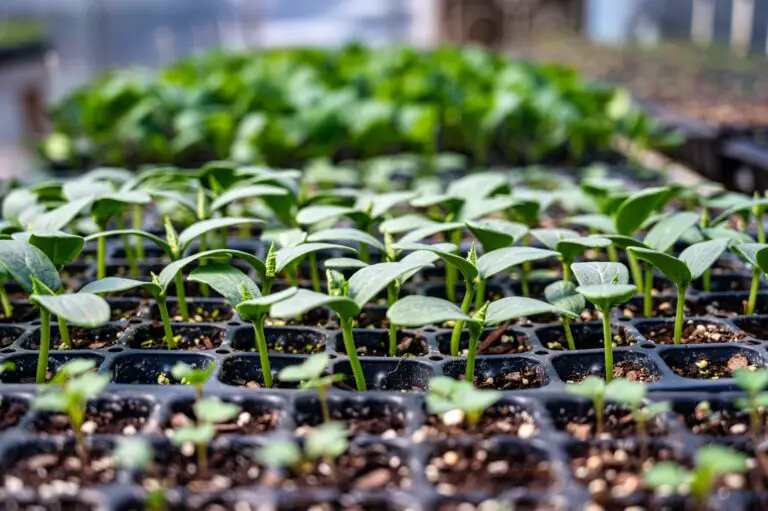
Imagine this: each seedling is a mini you, moving from a comfy couch to a new office. It’s a mix of excitement and nerve-racking changes. Similarly, your sedum requires a phase called ‘hardening off.’ Think of it as nature’s orientation week. Start by placing your seedling trays outside for a few hours each day, slowly increasing their exposure to outdoor conditions. By doing this over a week or so, your sedum seedlings beef up their tolerance and reduce the shock of their new, unsheltered home.
Knowing When to Make The Move
The perennial question—when is the right time to transplant? Keep your eyes on the prize, or in this case, the seedlings. When they flaunt several sets of true leaves, not just the baby ones they first appeared with, and can easily be nudfled out of the tray without a soil-clad tantrum, they’re ready. Choose a calm, overcast day for the big move. It’s less stress for you and less heat shock for them.
The Great Sedum Shuffle
It’s showtime but think of it as a delicate dance rather than a hasty shuffle. Carefully extract each seedling, cradling the soil and roots in your hands as if they were precious gems. Have their new residence pre-dug, a cozy hole just deep enough to nestle the seedlings in at the same level they were growing in the tray. It’s all about continuity for these green babies—a stable home equals stable growth.
With your sedum securely tucked into their new garden bed, give them a gentle but thorough watering. This acts as a ‘welcome to your new home’ hug, helping the soil settle and eliminating any pesky air pockets that could disturb root development. It’s like ensuring there’s a fresh pot of coffee on their first morning; a warm welcome goes a long way.
Who knew that such a small move could make such an impact on the life of a sedum? But with the right technique and a touch of tenderness, you’ve set the stage for these seedlings to thrive. They’ll soon stretch out their roots, unfurl their leaves, and offer back to the world the beauty that you invested in them, one careful transplant at a time.
Common Challenges in Growing Sedum from Seeds
So you’ve decided to grow sedum from seed—congratulations! It’s a rewarding endeavor that can yield beautiful, drought-tolerant succulents for your garden. However, it’s not without its hurdles. Let’s dive into the common challenges you may encounter and, more importantly, how to overcome them.
Poor Germination Rates: A Seed’s Cry for Help
First up, the infamous poor germination rates. It’s like throwing a party and half the guests don’t show up. Frustrating, isn’t it? This could be due to old seeds, improper storage, or not providing the right conditions for sprouting. The key is to source fresh, high-quality seeds and give them the tender, loving care they deserve—think warm temperatures, consistent moisture, and a good seed-starting mix. Sometimes, a little patience goes a long way too! And hey, it’s worth it when those tiny green shoots start peeking through the soil.
When Fungi Attack: Battling Seedling Diseases
Seedlings are like toddlers—vulnerable and prone to catching ‘bugs’. In this case, we’re talking about fungal diseases like damping-off. Picture this: one day your sedum seedlings are happily growing, and the next they’re flopping over like deflated balloons. Prevent this drama by ensuring good air circulation, not overcrowding the seeds, and using a sterile planting mix. If you spot trouble, act fast, and remove affected seedlings to prevent a full-blown outbreak.
Now, here’s a visual to help you identify and solve these issues. Let’s take a look at a video highlighting common troubles when growing succulents and how to fix them:
The Unseen Enemies: Pests in Your Sedum Sanctuary
You might not see them at first, but pests can throw a garden party you didn’t plan for. Aphids, mealybugs, and spider mites are some uninvited guests you might encounter. These tiny troublemakers can turn your sedum’s debut into a disaster by sucking the life out of young plants. Keep a vigilant eye and take action at the first sign of infestation. Natural remedies like neem oil can be your ally in this mini-battlefield, helping you to safeguard your seed-grown sedums without resorting to harsh chemicals.
Remember, every gardening journey has its bumps, but it’s all part of the learning curve. With these tips, you’re well on your way to nurturing those sedum seeds into thriving, beautiful plants that’ll make your neighbors green with envy. Roll up those sleeves and get planting!
Maximizing Growth: Fertilizing and Pruning Tips
When it comes to cultivating sedum from seed, fertilization and pruning are not just buzzwords; they’re essential practices that can make or break your succulent garden. Let’s talk dirt—or rather, let’s talk nutrients! The right fertilizer can serve as a power-packed meal for your sedum seedlings. Imagine a balanced diet for plants, comprising a blend of nitrogen, phosphorus, and potassium. This trio works wonders, but here’s the secret sauce: moderation. Overfeeding these hardy plants is like giving candy to a baby—it’s unnecessary and can lead to a sticky mess. So, go organic and choose a slow-release fertilizer that compliments a sedum’s low-maintenance lifestyle. You might even find yourself whispering sweet nothings to your plants as they flourish without any synthetic additives!
Now, let’s snip into pruning. It’s not just a haircut for plants; it’s about sculpting your green friends into living art. Trimming sedum plants prompts them to grow more robust and bushy. Think of it as encouraging a young prodigy—your careful guidance helps them reach their full potential. But remember: timing is everything. Pruning in late spring, right before the main growing season, can set the stage for an explosive performance of blooms and foliage. Not to forget, the occasional deadheading, or the removal of spent flowers, which is like an encore that keeps the show going. Embrace your inner garden maestro and conduct the growth of your sedums with the precision of pruning shears.
Incorporating organic approaches isn’t just trendy; it’s a commitment to your sedums’ health and the environment. So, raise your gardening game with a dash of organic fertilizer and a pinch of timely pruning, and watch your sedum seedlings grow into garden celebrities!
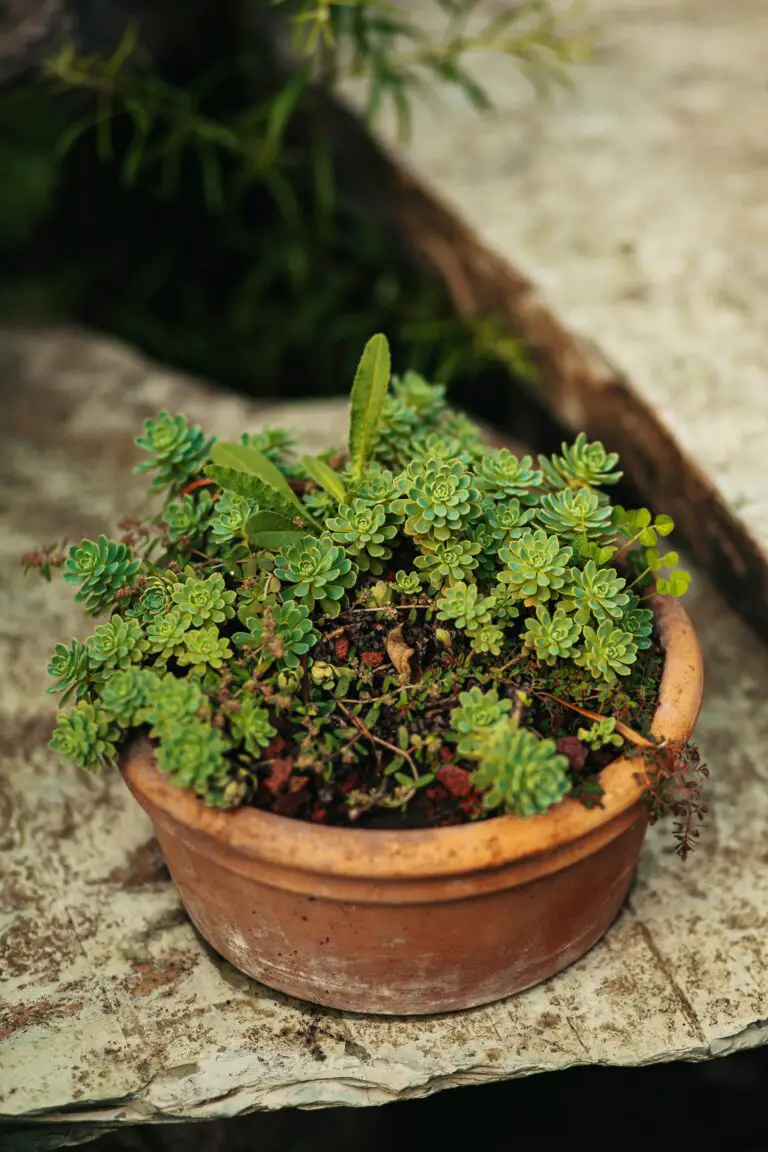
Different Methods of Propagating Sedum
When you’re looking to expand your succulent sanctuary, sedum offers a palette of propagation possibilities that might just tickle your gardening fancy. From the absolute novice to the seasoned green thumb, understanding the diverse ways of bringing more sedum into the world can be both rewarding and intriguing. Let’s delve into the comparative analysis of different propagation techniques and see how seed growth stacks up against them.
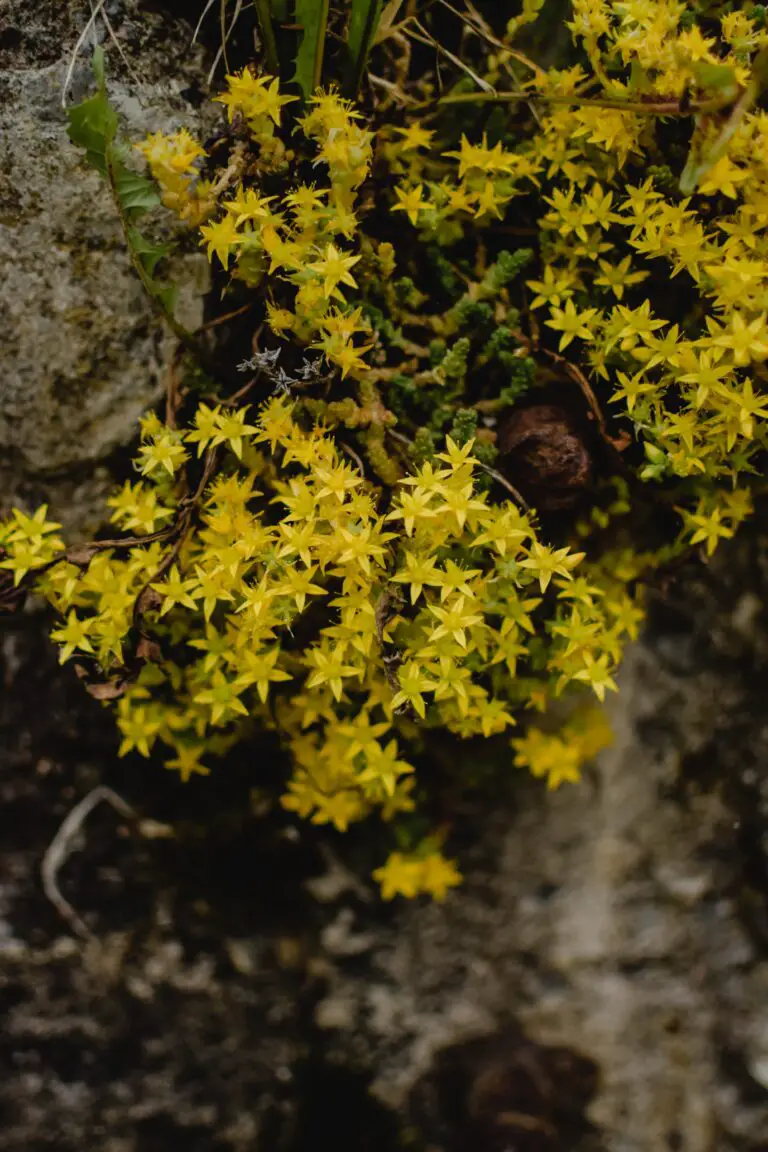
Dividing Your Delights
Imagine taking a lush, full-grown sedum plant and giving it the gift of duplication. Division is just that – separating an existing plant into multiple sections, each with roots and shoots, to create new plants. It’s like slicing a pie where each piece is just as delightful. This method is straightforward and usually successful, yielding mature plants much quicker than seeds.
Cutting to the Chase
Cuttings are the go-to method for many sedum enthusiasts. Snip a stem, let the end callous over, and then plop it into soil or water. It’s a bit like striking a match and watching a new plant fire come to life. With cuttings, you’re playing it safe – ensuring the new sedum will mirror the mother plant’s attributes, but it’s not without its pitfalls, as some cuttings are reluctant to root.
Leafing Through Possibilities
Ever plucked a leaf from a sedum and wished it would grow into a full-fledged plant? Leaf propagation turns that wish into reality. By carefully removing a leaf and letting it rest atop soil, you encourage it to embark on a transformative journey. It’s a test of patience, requiring a watchful eye and gentle care, but seeing a tiny rosette form can be magical – a true testament to nature’s wonders.
As we compare these methods with growing sedum from seed, each has its merits. Seed sowing may seem like a slow dance at first – tiny specks tucked under a blanket of soil, holding promises of green sprouts. With seeds, there’s a bit of mystery and excitement. Unlike the predictable nature of cuttings and divisions, seeds can vary, leading to unique and diverse sedum offspring. Yet the slow march to maturity is a rewarding journey, filled with anticipation at every stage of growth.
So, can you grow sedum from seed? Absolutely. Is it the best method for propagation? That depends on what you seek from your gardening experience. Whether you desire the assurance of division, the simplicity of stem cuttings, the marvel of leaf propagation, or the surprise that seeds can bring, sedum offers a method for every gardener. The choice, much like the care of these resilient plants, rests in your hands.
Showcasing Your Sedum: Landscaping Ideas
Now that we’ve discussed starting sedum from seed, it’s time to explore the exciting world of landscaping with these versatile plants. Imagine a lush carpet of sedum seamlessly weaving through your garden beds or the eye-catching spectacle of a rockery dotted with these hardy succulents. Whether you’re an urban gardener with just a patio to spare or a suburban green thumb with yards awaiting transformation, sedum offers a palette of possibilities.
Sedum in Garden Design
Picture this: A serene corner of your backyard, previously unnoticed, now comes alive with a tapestry of sedum varieties, each offering a unique hue and texture. By mixing different types of sedum, you can create a year-round interest with minimal maintenance—after all, sedum is known for its drought tolerance and easy-care attributes. Intersperse tall, flowering varieties like ‘Autumn Joy’ for a burst of late-season color or use low-growing types as an attractive ground cover that stifles weeds with style.
Rockeries Reimagined
A rockery, adorned with the sculptural beauty of sedum, is a technique master gardeners employ for an impactful visual treat. The nooks and crannies between stones provide perfect homes for sedum’s shallow roots, while the rocks themselves retain heat that these sun-loving plants crave. Visualize a gradient of textures from the spiky Sedum reflexum to the plush, jelly-bean-like leaves of Sedum rubrotinctum, all nestled among rocks that echo the rugged charm of a natural outcrop.
Container Gardens: Sedum Takes Center Stage
Don’t let limited space stifle your gardening dreams—sedum thrives in containers too! Mix and match varieties in a single pot for a living bouquet that evolves with the seasons. Or, for a touch of whimsy, plant sedum in unexpected items like old boots or teacups to create conversation pieces that bring joy and a hint of greenery to even the smallest balcony. The resilience of sedum means you can enjoy the fruits of your creative planting virtually year-round.
Let’s dive into some real-life examples to inspire your sedum landscaping journey. Take a cue from your local community gardens or botanical parks, often brimming with sedum showcases. Or, draw inspiration from your neighbor’s rockery that spins the narrative of a micro-mountain range alive with the rugged elegance of sedum clusters.
To help you envision the potential of sedum in your own space, here’s a video brimming with succulent landscaping tips:
With a bit of planning and creativity, sedum can transform the ordinary into something truly magical. So, go ahead, sow those seeds and let your garden tell the story of sedum’s adaptability and charm.
Frequently Asked Questions
Are you pondering over the idea of growing your own plush carpet of sedum from those tiny beads of potential—sedum seeds? Great! It’s a journey sprinkled with tiny green rewards, and I’m here to guide you through the forest of queries. Let’s embark on this adventure and unravel the mysteries of seed-born sedum growth one question at a time.
Can I Grow Sedum from Seed?
Absolutely! Donning your gardener’s hat and propagating sedum from seeds can be a rewarding enterprise. While sedum is often propagated from cuttings, growing from seed opens up a world where you can watch life unfurl from the soil. Remember, patience is key—sedum seedlings like to take their sweet time, emerging as tiny, green ambassadors of hope.
What’s the Best Time to Sow Sedum Seeds?
Timing is everything! Sedum seeds prefer the caress of spring or autumn’s cooler embrace. Picture this: A springtime sowing, just after frost bids adieu, setting the stage for seedlings to bask in the lengthening days. Or autumn, where seeds can snuggle under the soil for a winter dormancy, waking up with the symphony of spring.
How Do I Prepare the Soil for Sedum Seeds?
Imagine you’re crafting a bed for a seedling royalty—sedum seeds thrive in well-draining soil with a sprinkle of gritty personality. Mix in some sand or perlite with your potting mix, granting those roots the luxury to breathe and avert sogginess’s curse. A neutral pH range, a cozy pot, or a chosen spot in your garden’s tapestry—is all they ask for.
Do Sedum Seedlings Require Special Care?
As fledgling greenness emerges, your nurturing instincts kick in. Sedum seedlings prefer tough love—too much water is their nemesis. A light misting to keep the soil slightly moist, a sunny spot to soak up the rays, and a whisper of fertilizer to chant growth spells. Watch over them, but let them crave for more as they inch upwards.
How Long Until My Sedum Seeds Sprout?
Envision a gardener—patient and hopeful—marking days on a calendar. Sedum seeds are the slow-dancing kind, taking anywhere from three weeks to several months to peek through the soil. This waiting game is part of the green journey; it teaches resilience and rewards with sprouts that unfurl in slow motion to the rhythm of nature’s beats.
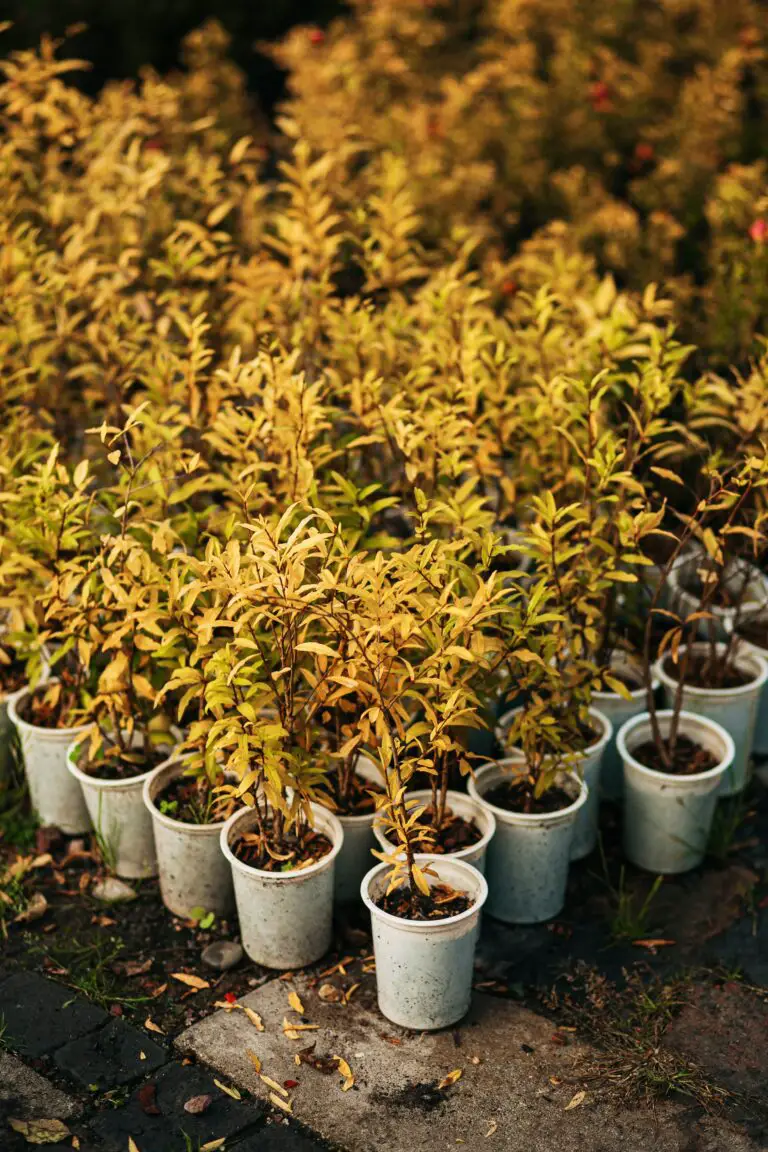
There you have it, diligent seekers of green wisdom! Armed with these answers, you’re now ready to transform sedum seeds into a living, breathing tapestry of succulent splendor. Keep questioning, keep growing, and let each tiny seed leaf be a testament to your green-thumbed dexterity.
FAQ: How Long Does It Take for Sedum Seeds to Germinate?
Starting sedum from seed is like embarking on a garden adventure; it’s relatively simple and can feel quite rewarding. But before you even think about seeing those spunky little seedlings poking through the soil, you’re probably wondering about the wait time. How long before you can spy the first glimpse of green?
The anticipation is as real as waiting for water to boil! Generally, sedum seeds take anywhere from 2 to 6 weeks to germinate. However, this timeline isn’t set in stone—it could be less of a Lord of the Rings epic journey and more of a sprint depending on a few key factors.
Let’s set the scene. Imagine your sedum seeds as tiny contestants on ‘The Great Germination Race’. Before the race begins, they need ideal conditions such as consistent moisture, light for photosynthesis, and a warm, cozy soil temperature—about 65 to 72 degrees Fahrenheit. A lack of these critical factors will have them stalling at the starting line long after the starting pistol has been fired.
Consistency is key here. Think of maintaining moisture like watering your favorite houseplant; too little and you won’t wake up those sleepy seeds, but flood them and they’ll be swimming for their lives. The perfect balance will see them germinating like teens rushing out the door when they hear the pizza delivery arrive!
Now, light is an interesting contender. Sedum seeds are the introverts of the plant world; they actually prefer a little light exposure to kickstart their growth. So, don’t bury them deep, let them enjoy a bit of sunbathing (indirect light will do). It’s the plant equivalent of lightly toasting marshmallows over a campfire—just enough to coax them into bloom but not so much that they burn out.

Finally, it’s a temperature play. If you’ve ever tried rising bread dough on a chilly day, you know the struggle. Sedum seeds feel the same. They prefer it toasty. Using a seedling heat mat could help expedite their sprouting, making it more of a quick weekend getaway than a cross-country road trip.
So, the ‘when’ of germination is less of a calendar date and more of an environmental equation. Give these seeds the TLC they need, and before you know it, they’ll be breaking through the soil, ready to amp up your garden with their vibrant charm. Keep a keen eye out; it might just happen when you least expect it!
FAQ: Can Sedum Seeds Be Direct Sown Outdoors?
If you’ve been pondering the question “Can I grow sedum from seed outdoors?” you’re not alone. Many green thumbs and novice gardeners alike have turned their attention to the hardy and diverse genus Sedum, curious about the propagation possibilities. Let’s dig in and unearth the nitty-gritty of outdoor sedum sowing.
Imagine you’re standing in your garden, sedum seeds in hand, wondering if these tiny specks of potential can brave the elements without the cushy start afforded by indoor sowing. Direct sowing sedum seeds outdoors is indeed a viable option, but it requires a little know-how and, of course, a dash of patience.
Firstly, it’s essential to consider the timing. Sedum seeds have the best shot at success when sown after the danger of frost has passed, yet while the soil is still cool to touch. This period encourages the seeds to make the most of the upcoming warm growth season without the shock of icy beginnings.
Now, let’s talk placement. Choose a location that provides what sedums love most: good drainage and ample sunlight. When you cast these seeds into the welcoming earth, ensure they maintain a shallow depth—just a kiss of soil coverage—to prevent them from becoming future fossils rather than flourishing plants.
Peek into the life of seasoned gardener, Emma, who swears by the “sprinkle and hope” method. With a flick of her wrist, Emma showers her well-prepped garden bed with sedum seeds. She’s had enviable success—an inspiring mosaic of Sedum spurium gracing her rock garden, all from direct outdoor sowing!
Of course, it’s impossible to ignore Mother Nature’s mood swings. A dry spell here, an unexpected frost there, and your seedlings might need a little extra TLC. Mulching can help retain moisture and provide some temperature control, giving your seed babies a protective blanket to cuddle under.
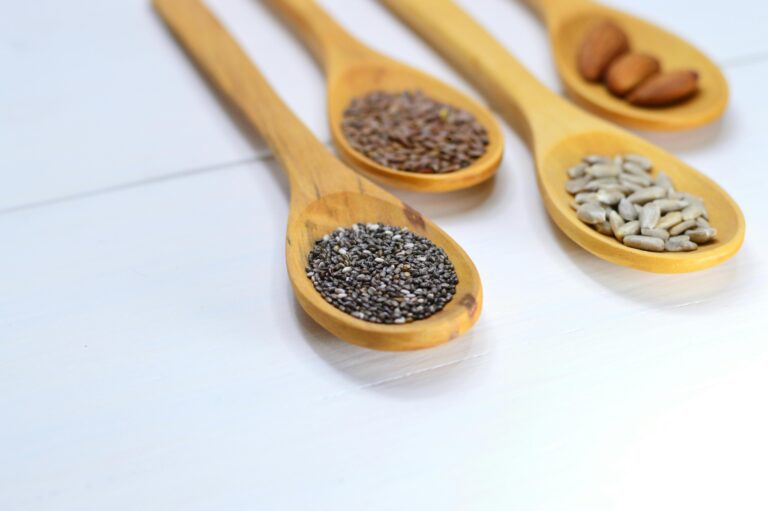
While experiments like these can be exhilarating, some sedum varieties may be shy starters outdoors, especially those with finicky temperaments or delicate dispositions. It’s often worth the gamble, though—when those first green shoots push through the soil, it’s a high-five moment between you and Mother Earth.
In closing, can you direct sow sedum seeds outdoors? Absolutely! With the right approach and a sprinkle of audacity, you can turn those seeds into stoic sedums standing proudly in your garden. Remember to watch the weather, treat your seeds tenderly, and get ready to boast about the blooms that start with a humble outdoor beginning.
FAQ: Are There Special Techniques for Rare or Exotic Sedum Varieties?
Embarking on the journey to grow rare or exotic sedum from seed? You’re in for an adventure that’s both challenging and rewarding. But hold on, green-thumbed enthusiasts, because these unique succulents may require you to step up your propagation game!
Understanding the Eccentric Needs of Unusual Sedum
Each sedum species, particularly the less common ones, come with their own set of rules. It’s like they speak a different language, and your job is to become fluent in it. For starters, some exotic sedum might need a particular soil ph, a bespoke blend of nutrients, or even a custom-tailored light regime. It’s akin to crafting a gourmet meal for a connoisseur plant that has a taste for the finer things in life.
Step-by-Step Guide to Success
Here’s a real-life scenario for you: imagine you’ve got your hands on some rare sedum seeds from a far-off mountain range – pretty exciting, right? Now, it’s not just about chucking them in the dirt and hoping for the best. No, you’ll need to mimic their native habitat. Maybe they thrive on misty mountaintops with just a kiss of early morning sun or require a cooling period to trick them into thinking winter’s passed. It’s these nuances that make all the difference.
Watch and Learn: Propagation in Action
Seeing is believing, and sometimes you need a visual nudge to get those sedum seeds sprouting. Thankfully, there are seasoned succulent savants who’ve walked this path and have insights to share. Take a peek at this video for a close-up look at the process, and prepare to be inspired to apply the techniques to your rare varietals.
To wrap it all up, growing unique sedum species from seed is a bit like decoding an ancient plant mystery. It might take patience, a little bit of sleuthing, and definitely a lot of TLC. But the satisfaction of seeing those first tender shoots? Priceless. So, delve into the distinctive world of sedum propagation and watch as your gardening proficiency blossoms along with your exotic charges!
FAQ: What’s the Best Time of Year to Plant Sedum Seeds?
When it comes to planting sedum seeds, timing is everything. Just like a perfectly timed joke that sends the entire room into laughter, sowing your seeds at the right moment can result in a thriving, colorful spread of these resilient succulents. Attempting to grow sedum from seed is a journey, and ticking the clock at the right start time is your first step.
Let’s dive into the seasonal secrets that veteran gardeners swear by. Imagine the serene beauty of a sedum-speckled rock garden shimmering under the sun’s warm spring embrace. That’s your goal! Spring, with its mild temperatures and occasional rain showers, sets the stage for sedum seeds to burst into life. You’ll want to mark your calendar for a spring planting, often after the last frost when the soil is workable and warm enough to coax those tiny seeds into sprouting.
Consider the Microclimate
While spring generally takes the trophy for the best time to plant sedum seeds, consider the unique microclimate of your garden. Does your backyard transform into a sunbather’s paradise come summer? If so, an early start might be necessary to beat the heat. On the contrary, a garden that’s slow to shake off winter’s chill could benefit from a slightly delayed sowing.
Summer Sowing? Not a Total No-Go
Summertime is a buzz of life and growth, so why not add the charm of sedum to the mix? Though it’s not the gold-standard season for planting, if you missed the spring window, don’t fret! Sedum is hardy, and with a little extra TLC — think regular watering and strategic placement for shade — your sedum seeds can still find their footing amidst the summer sizzle.
Can’t visualize the process? Fear not! Below is a video that guides you through the nuances of growing these plucky plants and pinpointing the ideal time for seed sowing:
Ultimately, the success of your sedum seedlings hinges on understanding the rhythms of your local environment. Keep tabs on your seasonal patterns, and soon you’ll bask in the satisfaction of hand-crafting a sedum spectacle that started from the humble beginnings of a seed packet.
Conclusion
Wrapping up our green-thumbed guide, let’s revisit the journey of growing sedum from seed. It all starts with those tiny specks that hold the potential for lush, vibrant sedum plants. Picture this: a sprinkle of seeds today, a garden full of textural delight tomorrow. Indeed, growing these hardy succulents from seed is a tale of transformation, not unlike the classic ugly duckling. Just remember—patience is more than a virtue here; it’s a necessity.
Imagine your seedlings as miniature gardeners themselves, hard at work beneath the soil. They’re establishing roots, gathering nutrients, and preparing to break through into the sunlight. It’s a slow but sure evolution, one that requires a steady hand and a gentle touch. Like a painter with a canvas, care must be taken with each brushstroke—or in this case, each watering and bout of tender care—to ensure the masterpiece will flourish.
Keep in mind, the road to that sedum-studded walkway or rock garden is paved with diligence and mindful attention to detail. No two seeds will sprout the same way, just as no two artists will paint the same picture. Your sedum’s success lies in the microclimate you curate—mimicking their natural rugged terrains, with just the right light, the perfect pinch of soil, and a schedule of watering that’s more about rhythm than routine.
As we reach the culmination of our guide on can you grow sedum from seed, stand back and admire your work. A brief recap? Sure. You’ve opened the seed packet of opportunity, planted with precision, and embarked on a watchful waiting game. But it’s more than that—it’s a green journey that can fill the heart as much as the garden. So, gear up with optimism and sow your sedum; let the cycle of growth and care begin!


